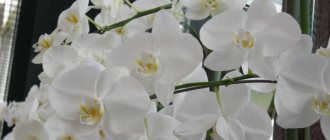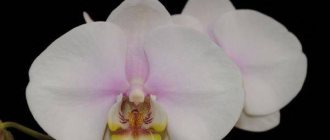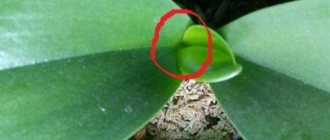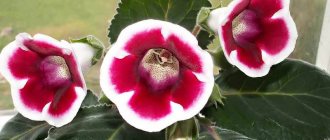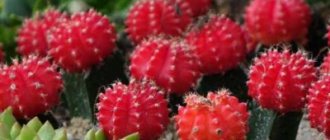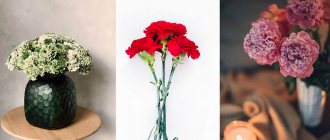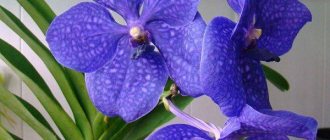Phalaenopsis white embodies tenderness and elegance. It is considered a symbol of luxury, so it is customary to decorate not only homes, but also office spaces with such flowers. This epiphyte is often used in bridal bouquets, symbolizing the purity of the bride and personifying sincere love.
Read the article to the end and you will learn not only about which varieties of orchids have snow-white buds, but also about the need to provide such plants with specific care.
Varietal phalaenopsis: photos and names
Many flower lovers ask the question: what is varietal phalaenopsis? These are varieties of phalaenopsis, in other words, orchids of different varieties.
The taxonomy of phalaenopsis varieties is carried out by the British Royal Horticultural Society .
Important! The scientific basis for classifying varieties is difficult to understand, and therefore among amateur gardeners it is customary to divide phalaenopsis according to the type of flowering and shades of the flower cluster. The shape and color of the leaves, the maximum size of peduncles, and the diameter of the flower are important in the classification. These are not plant varieties obtained as a result of long-term selection, like apple trees, but rather characteristic characteristics.
Standard
At the end of the peduncle there is an apical bud .
The standard phalaenopsis has rather large flowers.
In plants belonging to this variety, after flowering ends, it dies off irrevocably and the branch can be cut off .
But the size of the flowers is usually larger than usual.
Multiflora
On a densely branching peduncle, many small flowers bloom at once , sometimes several dozen. The buds bloom one after another, gradually adding to the splendor of the flower cluster.
The flower shape may differ from the classic standard phalaenopsis.
Phalaenopsis Multiflora 'Sunset Love'.
Novelty Phalaenopsis
They can bloom all year round , releasing many peduncles at once, but the main thing is that the flowers do not just bloom one by one, the peduncle continues to grow from the apical bud and more and more new flowers appear.
It does not need to be cut off even after flowering - after a period of dormancy, more buds may appear.
Novelty phalaenopsis Princess Kaiulani 'Chin Yo'.
The plant does not waste vital energy and time on growing new shoots and pleases with more frequent and abundant flowering .
The main varieties are obtained by crossing natural species of phalaenopsis.
At the end of the 20th century, the popularity of phalaenopsis increased sharply, largely due to the dissemination of information via the Internet.
Exotic plants began to be grown on an industrial scale .
Thousands of new hybrids of these wonderful flowers, suitable for indoor growing, in stores around the world
When propagated naturally, the descendants of hybrids do not retain their properties , so often successful hybrids are preserved and propagated using cloning.
Perfume factory: 7 favorites on your windowsill
Mass markets are unlikely to please you with exquisite varieties. You can purchase phalaenopsis with a refined scent in a specialized nursery or online store. We recommend taking a closer look at the following varieties:
"Scention"
The orchid belongs to the multiflora type, that is, it has the ability to grow in height during the flowering period, forming new buds. Peach-colored petals with a lilac haze along the bottom edge exude a citrus aroma. The color of the leaves is mesmerizing - emerald, with many dark inclusions. The smell is present both day and night. It becomes especially pronounced in the evening.
READ 7 ways to propagate orchids at home. Basic mistakes and ways to avoid them.
"Odorion"
The Odorion
Phalaenopsis orchid delights the eye with buds of rich pastel shades - peach, pink, powder or orange-raspberry. The aroma cannot be clearly divided into components. Overall it can be described as a floral perfume with notes of jasmine and citrus. The plant likes to be under bright, diffused light for up to 16 hours a day.
"Diffusion"
It is distinguished by particularly lush flowering. With proper care, 'Diffusion' will produce many buds from spring to fall. It has an unusual smell: at first it is weightless, almost inaudible, and in the evening it reveals notes of ginger and warm citrus. The intensity of the aroma depends on external factors (humidity, temperature and lighting). The flowers have a light crimson color with a noble lilac depth.
"Dusty Belle"
Dusty Belle
Phalaenopsis orchid with pink petals and purple-orange lip filling. Sensual beauty BeIIe! It smells fragrant throughout the day. The smell is incomparable: on the one hand, it is the clear sound of ylang-ylang oil, sandalwood, musk, peach, and on the other hand, a pharmaceutical medicine. This composition evokes mixed feelings, especially since the aroma is quite strong. The plant loves moist air and temperature changes - 26-27 degrees during the day and 18-19 at night.
"Valkion"
Orchid Valkion
is practically no different from the “Scention” variety: flowers of pastel shades smell of citrus with notes of lily of the valley. In Russia, these phalaenopsis are classified as a separate group, and, for example, in Holland “Scention” and “Valkion” are identical species of orchids.
"Orange"
Orchid Orange
Sugar peach in the world of exotic flowers! The buds are colored orange and exude the scents of vanilla, honey, chocolate and buttercream. In the morning the aroma reveals bright notes of lilac and hyacinth, and in the evening it reveals tart sweetness. If you provide the plant with access to sunlight (but not the scorching sun!), the fragrance will be more intense.
"Middenrose"
Orchid Miden Rose
Ardent Lady with bright crimson petals and a throat edged with yellow. The aroma is not simple, it reveals itself gradually: spicy anise gives way to notes of warm lemon-ginger pie. Flowers of the Middenrose variety do not tolerate direct sunlight, so on a hot day the window with the plant is shaded.
READ Azalea: care and replanting, flowering at home
Types of phalaenopsis with photos
Pleasant (amabilis, Amabilis)
Up to twenty delicate white flowers bloom simultaneously on the graceful curved branches of this plant .
Amabilis.
The center is pale yellow with a pattern of pink, red and brown specks.
The edges of the lower petals are narrow and often curved upward, like teeth. The subtle, barely noticeable aroma gives it a special charm.
Schilleriana
a subtle silvery pattern on the outside , as if marbled.
Schilleriana.
A whole waterfall can bloom simultaneously on one peduncle - 250 flowers is not the limit, but an average number!
Shades of Phalaenopsis Schiller can range from pale pink to sophisticated burgundy.
Stuart (Stuartiana)
A profusely blooming species of Phalaenopsis Stewart, it features an attractive pattern on white flowers.
Stewart's Phalaenopsis has red spots on the base and a specific pattern.
of several dozen flowers develops on a peduncle up to 60 cm long
The long, up to 20 cm leaves of the plant also have a pattern of silver-gray rounded spots.
Has a weak aroma.
Sandera (Sanderiana)
It is rare and expensive. The flower brush is located on several branches.
Sanderiana.
The total height of the peduncle is slightly less than a meter, about 80 cm. Large flowers , up to 10 cm in diameter, white or pink.
The leaves have a dark green complex pattern.
Pink (Rosea)
A petite beauty with an intricate veining pattern on the large upper petals and a contrasting lip in a darker shade of purple.
Rosea. Photo taken from flickr from a certain Carl Baldini.
The name of this species accurately describes the coloring features . The diameter of the flower is only about 3 cm, and the peduncle is no higher than 20 cm. The leaves are a rich dark green color .
Gigantea
Flowers 3-4 cm in diameter are collected in a luxurious inflorescence in the form of a cone, drooping down.
Very large Phalaenopsis gigantea.
The leaves of this giant are often longer than the peduncle - up to fifty cm, and the peduncle usually does not exceed forty.
The flowers are variegated in shades: purple, beige, terracotta. The green mass is also often decorated with a pattern of light gray speckles.
Horse (Equestris)
Small flowers of this species are only 2-3 cm in diameter, but this only adds lightness and grace.
Equestris.
This baby's flower brush is only 20 cm in height, but it looks voluminous and lush .
Many small branches form an airy flower cluster .
At its tip, new buds , thanks to this it blooms all year round with good care.
Staghorn (cornu-cervi)
In comparison with its lush, bright neighbors, this phalaenopsis looks extremely unusual .
The coloring resembles the horns of a young deer .
With its shape, the staghorn phalaenopsis resembles not only the horns of a young deer, but also a starfish.
The shape is noticeably different, the petals look thicker and stronger.
The plant is miniature , but produces several flower stalks with many branches at once.
The inflorescences are varied in color from yellow ocher to reddish brown.
Luddeman
The petals look as if they were painted by an artist . This species is extremely varied in colors .
Phalaenopsis Luddeman.
There are yellow flowers with red stripes, white with purple. A plant in full bloom can bloom regardless of the time of year.
Although there are very few flowers on the peduncle, no more than 7, they are quite large and smell pleasant. Average diameter 6 cm.
Ambonian (amboinensis)
This species of the orchid family blooms all year round , opening buds one after another. As a rule, there are several flower stalks at once.
Ambonian phalaenopsis.
Striped petals with bright, attractive colors stand out among the pink and purple palette of popular varieties.
Parisha (Parishii)
Among all the variety of these beautiful plants, there is not a single one that could be called ordinary.
Parishii.
Parisha is one of the most exotic varieties , a tiny potted plant with aerial roots and leaves that looks like a painstaking composition created by a florist.
Hybrids based on it are used to create mini-phalaenopsis.
Hieroglyphic (hieroglyphica)
The complex painting on the individual petals of this large plant is not repeated even on one peduncle.
Hieroglyphic.
Leaves up to 30 cm, many flowers on several peduncles look like a living bouquet .
Leaves and flower stalks tend to droop , so a stand is needed. A plant full of detail and personality.
Varieties of orchids: photos with names
Orchid Buddha
In the photo there is an orchid "Buddha"
Orchid "Balm"
a cheerful beauty with a pronounced citrus aroma
Orchid "Phantom"
This species has no leaves. The flower seems to be suspended in the air. Hence its second name – “Ghost”.
READ Zephyranthes: growing conditions for the “upstart”, care and maintenance
This species received its name due to the structural features and location of its growth. In the tropics, in swampy areas, you can find a white flower “floating” in the air. The Linden orchid performs this trick thanks to its system of structure and life activity, namely: the open root system is attached to another vertical plant, often a tree, as a support. Then it produces its long, thin peduncles, on which the miracle of flowering occurs. This way it looks like a white bud hanging in the air.
Orchid "Monza"
The aroma is as delicate as the transparent pink-yellow petals
Photo orchid "Panda"
in the description of the variety you will definitely see a paragraph about buds with dark, chaotic inclusions - these are their distinctive features
Panda Orchid
"Ferrara ferrara"
with luxurious yellow flowers
Orchid Ferrara
Orchid "Andorra"
Andorra
Orchid "Malmo"
has a pleasant, unobtrusive smell, photo attached
Malmo
Phalaenopsis variety "Cherry Bomb"
has a tart aroma that reveals itself under the sun's rays
Cherry Bomb
Orchid "Pandora"
Pandora Orchid
Orchid "Kansas City"
close-up photo of flowers
Orchid "Kansas City"
Phalaenopsis "Golden Buddha"
exudes a subtle spicy aroma
Phalaenopsis "Golden Buddha"
Orchid "Octopus"
Orchid Octopus
Orchid "Darwin"
blooms with gorgeous flowers in pastel shades.
Orchid Darwin
Pictured is the Pavarotti orchid
Petals of dark cherry color do not fade in the sun
Orchid Pavarotti
Orchid "Phoenix"
Phoenix Orchid
Hybrids
Botany is full of surprises.
One of the pleasant discoveries was the easy crossing of different types of phalaenopsis with each other, in which previously unknown shapes and shades of colors appear.
Industrial cultivation and sale dictates its own rules .
Absolutely identical ideal plants on a store shelf are most likely clones of a successful hybrid .
When crossing different types of phalaenopsis, such beautiful hybrids are obtained.
Biologists are striving to obtain new combinations of specks , unusual petal shapes and contrast with the lip.
Thousands of orchid hybrids can be described in the form of an encyclopedia in several volumes rather than within the confines of a single article.
Groups are distinguished and type of flowering.
Miniature
Flowers are not for a bouquet, but to take home , look after and care for, that’s what mini phalaenopsis is.
Here comes Mini Mark.
Before the creation of this group of hybrids, orchids were most often cut for bouquets.
A plant that is small in size and height is easier to maintain. Fragile flowers do not lose their grace and evoke tenderness.
Taiwanese
Bright, large, even provocative tropical flowers , unlike the first hybrids of porcelain-flat flowers.
A play of nature that imitates the work of a calligraphy master, but in reality it is the painstaking work of botanists .
Taiwan Phalaenopsis 'Red Cat'.
Of course, they are unpretentious to indoor growing conditions, because their creators took care of this.
This direction of orchid hybridization is rapidly developing. New color options for are appearing .
Very popular are species in which the corolla of petals and lip are painted in contrasting shades.
Botanists have managed to achieve previously inaccessible golden-yellow, peach, and orange phalaenopsis flowers, and something new appears .
Novelty
A group of hybrids distinguished by type of flowering.
Attention! A remarkable distinctive property is that after flowering ends, the flower stalks go into a dormant period, and then new buds grow from the apical bud and flowering continues. This process can be repeated several times.
The flower raceme is very compact, raised above the rosette of leaves.
Taiwan Novelty Phalaenopsis.
At the same time, the plant produces two or more flower stalks.
This group of hybrids contains all the variety of colors developed over the years of work by biologists.
Blots, strokes, dashes and other food for imagination on dense petals of the correct shape.
Caring for a Phalaenopsis orchid at home
Start taking care of the condition of your new pet immediately upon arriving home from the store. The flower does not tolerate a change of residence. If you have chosen a beautiful, strong plant, in which all the roots look strong and healthy, and the peduncle, tall and elastic, is strewn with flowers of extraordinary beauty, then the best thing is to leave the flower alone for a couple of weeks. How to care for Phalaenopsis at this time? No way! At this time, there is no need to water, feed, or replant the Phalaenopsis. There is also no need to place it on the windowsill next to other flowers; let it stand to the side, in partial shade, as if in quarantine. Inspect the flower regularly. If the substrate in the pot consists of large pieces of bark, the roots are gray-green, and the plant looks healthy, then it does not require replanting. Move the pot with the plant to the place of honor prepared for it among other green pets and begin to take care of it according to all the rules.
Replanting Phalaenopsis
Healthy Phalaenopsis bushes are replanted no more than once every two to three years, when its substrate turns into dust. But there are good reasons to replant a plant urgently.
For example, during quarantine, you discovered that the leaves of Phalaenopsis began to wither and sag, and the soil, as it dried out, began to look like a caked sponge. Or if the plant has black spots or other signs of rot on its roots. In both cases, Phalaenopsis should be transplanted into another pot with a new substrate, and without waiting for the end of flowering.
Remove the plant from the planting container and carefully wash its root system under a warm shower. If the soil is poorly washed, leave the orchid in a bowl of water for a while. Then free the roots from the soil and shake off the water. Trim rotten, damaged or overly long roots. Sprinkle the sections with crushed activated charcoal or charcoal. Leave the Phalaenopsis for a while, maybe overnight, in a dry basin, so that all the cuts tighten and dry. The next morning, plant the plant in a new, pre-disinfected pot in a soil mixture suitable for epiphytic plants. Place a layer of the largest pieces of substrate at the bottom of the pot, and use smaller pieces of substrate to fill the voids between the roots to the base of the rosette. Leave two to three cm free at the top of the pot, so that as the aerial roots grow there is a place to add the substrate. A large plant with dense, heavy leaves must be tied to a support and strengthened so that it does not wobble.
If the root system of a flower has been severely damaged, it will be difficult for it to recover. Help the plant. Place the flower and pot in a plastic bag for a couple of weeks to create greenhouse conditions with constant humidity and temperature for the diseased plant. Ventilate it from time to time. First cut the peduncle and place it in a vase with settled water. It is better to sacrifice a peduncle than to lose the entire flower. A cut peduncle with butterfly flowers will serve you as a consolation for a long time.
This may be interesting: Cattleya - orchid care at home
Other reasons for transplanting Phalaenopsis into a new pot:
- The landing capacity is too small. This can be determined not only by the roots that stick out above the pot, but by the roots that have filled the entire pot inside and displaced the substrate. The phalaenopsis should be transplanted into a slightly larger pot so that, in addition to the roots, it can contain a sufficient amount of substrate for support. It is better to transplant after flowering.
- if all the leaves fell to one side during transportation, the peduncle with its support is also tilted, healthy roots stick out too much. Transplant the flower into a normal pot with good support, fill the voids with a suitable substrate.
If the orchid feels good, the leaves are elastic, the roots are light green and alive, we do not recommend disturbing the flower. If you want to transplant Phalaenopsis into a new beautiful flowerpot, then it is better to do this in early spring and only after the orchid has finished flowering.
In any case, after each transplant, do not water the plant for the first three to four days; allow the disturbed roots to heal their wounds.
The soil
Phalaenopsis belongs to epiphytic plants. In the wild they grow on trees. Their roots are aerial. They are used not only to strengthen the plant on the bark and branches of trees, but also to feed the plant from the air. The flower also receives moisture and oxygen through its powerful roots. Therefore, Phalaenopsis absolutely do not grow in ordinary garden or forest soil and do not tolerate prolonged flooding. They require a more loose, lightweight, moisture- and breathable substrate. Ready-made soil is suitable for epiphytic or orchid plants. We recommend that you study the composition of the soil. Sometimes it is not suitable for growing Phalaenopsis due to its high moisture holding capacity.
It is not at all difficult to prepare the soil yourself. Collect bark from fallen trees in the pine forest, dense, without resin. Grind it into pieces from 1 to 3 cm, add pieces of charcoal, polystyrene foam, and wine corks of the same size. Stir. Place in a saucepan and simmer for 10 minutes. The composition of the substrate is a little strange, but it will be suitable as a support for the Butterfly Orchid! If the air in the room is dry, you can add a little sphagnum moss to the substrate, just a little, otherwise it will fill the entire space and will not allow the roots to breathe freely. In addition, a large amount of moss will retain moisture, the excess of which can harm the roots. In any case, you should not overfill the pot with substrate, so as not to interfere with air circulation between the roots.
Humidity
Tropical beauty grows better in high ambient humidity. If there is not enough of it, Phalaenopsis may stop growing, its buds will stop opening, and the flowers will begin to dry out. It is necessary to maintain humidity in the room with the flower within 60 - 80%. The minimum permissible humidity is 30-40%. At low humidity and high temperatures, you should place the flower pot in a high tray with wet expanded clay or pebbles. Under no circumstances should the pot stand in water. Water can be poured into wide containers or plates that are placed around the orchid pot. Phalaenopsis loves regular spraying of its leaves and the surrounding air in the morning, especially during those periods of its life when the heating is turned on in houses. By night there should be no water in the leaf axils or at the growing point.
Pot for Phalaenopsis and watering
For this orchid, a not very large translucent plastic pot or similar glass container with holes in the bottom and sides, in which the condition of the substrate and root system will always be under your control, is suitable. The plant needs a pot for support. The pot size should be suitable for the plant's strong root system. In a pot that is too small, the roots will be injured and stick out, while in a pot that is too large, moisture will accumulate and the substrate will not dry out well, which will eventually lead to rotting of the roots.
A translucent pot is perfect
If you don’t really like the picture of intertwined roots in the substrate, you can hide it by placing the pot in a wide multi-colored pot. Drainage holes at the bottom of the pot are required, since water stagnation is not allowed due to the risk of root rotting. A transparent pot is also good because you will constantly watch how the substrate dries out after the next watering. At normal humidity, healthy roots are green; when they dry out, they become lighter. Dry substrate and light roots serve as a signal for the next watering.
If you nevertheless planted Phalaenopsis in a dark pot, you will have to determine the soil moisture at the depth of the pot by touch. Carefully rake the substrate one or two cm deep, try to see if it is damp there. If it's dry, you can water it again. Drain excess water from the pan. Use only settled or boiled water. Previously, they used rainwater, but with the deterioration of the environment in cities, many harmful impurities began to appear in precipitation.
How to water Phalaenopsis:
- in hot weather - every 2-3 days;
- in spring and autumn - once a week;
- in winter - once every two weeks.
If you notice that condensation often collects on the walls of the pot between waterings, then make additional holes in the walls of the pot for better air circulation.
Let's talk about another popular method of watering Phalaenopsis. The pot with the plant is placed for two to three hours in a large container with warm, settled water so that the water covers 1/3 of the pot. This bathing can be replaced by long-term watering - continuously, for 20 minutes, pour warm water into the pot until the substrate in the pot is completely wet and saturated with moisture in the required amount. The orchid's roots will noticeably turn green. After bathing, place the pot in a tray so that excess water comes out through the drainage holes. Excess water must be drained immediately.
If the air temperature in the room remains above 30 degrees for a long time, bathing is carried out once every 5 days.
We draw your attention to the fact that water quality is an important factor in the well-being of Phalaenopsis. If you water it with tap water, even warm, then over time rusty or white spots will appear on the leaves and roots, depending on the excess of salts in the water. It is possible to get rid of plaque using milk or lemon water, which should be used to wash the leaves of the plant. If you use distilled water for irrigation, which contains no salts and trace elements at all, you should add fertilizers for epiphytic plants to such water when watering. It is best to water with filtered or boiled water heated to two to three degrees. above room temperature.
This may be interesting: General rules for caring for Dendrobium orchids
Sometimes, to grow Phalaenopsis, special epiphytic wicker bamboo or wooden baskets are used, in which the light green roots of the flower with a silver tint develop freely, effectively wrapping around the slats of the basket, both inside and outside it.
But we do not recommend ceramic pots for growing Phalaenopsis. Powerful roots grow into the walls of such a pot and complicate the process of removing the plant from the pot when replanting. Serious damage to the root system of the flower is possible.
Location and lighting
Phalaenopsis love good lighting. The duration of daylight should be at least 12 hours. It is better to place a flower pot on a windowsill in a south-east, east or west direction. It is better not to place it on windowsills facing south - the leaves may get burned. But not far from the southern windows, on a table or hanging shelf, this orchid will grow beautifully. If you only have north-facing windows, only a place directly on the windowsill is suitable for an orchid. © FlowersAdvice.ru
From autumn to spring, the plant will need additional lighting. Don't worry - Phalaenopsis grows well in artificial light. You can use this property when choosing a place in the back of the living room. You just need to keep in mind that over time, Phalaenopsis leans toward the light with its entire body. Therefore, it must be occasionally rotated 180 degrees to prevent it from tipping over or falling out of the pot.
Lighting is especially necessary for a flower when forcing a peduncle and setting buds. At this time, it is advisable to place the pot closer to the light and not disturb it. Do not turn or move from place to place. Leave these manipulations until the last bud opens. Now, during flowering, you can move the pot deeper into the room, into well-lit partial shade.
Temperature
Summer temperature of the flower is allowed from 24 to 30 degrees. In principle, this is the usual room temperature at which we all live in the summer. If the temperature is above 32 degrees for a long time, the flower may lose its buds and flowers, and the leaves will begin to wither. Try to keep the temperature within reasonable limits by spraying the flower and surrounding area, placing the pot in a tray with wet pebbles, and using a split system. To stimulate the formation of flower buds, we recommend keeping night temperatures five to six degrees lower than daytime temperatures.
In winter, the optimal temperature for the growth of Phalaenopsis is 18 - 25 degrees. The plant will withstand a temperature of 10–15 degrees for a couple of days; if longer, it is not a fact that it will not get sick. Under the influence of low temperatures, the roots of Phalaenopsis stop absorbing moisture, and the plant begins to consume nutrients and water previously accumulated in the leaves. The leaves begin to wrinkle and lose their elasticity. Beginning flower growers think that the orchid does not have enough moisture, and they begin to water the plant intensively, which worsens the situation. Frozen roots cannot absorb water and rot. In order to avoid this situation, we recommend keeping a thermometer on the windowsill next to the pot to monitor the temperature. Place the flower pot so that it does not come into contact with the cold glass.
Phalaenopsis love fresh air. Do not forget to regularly ventilate the room, even in winter, while protecting the flower from drafts so as not to provoke any disease.
During the winter dormancy of Phalaenopsis, a couple of weeks after flowering, it is advisable to keep the flower in a cool place, at a temperature of 15 – 17 degrees. Keep in mind - the lower the temperature, the lower the humidity in the room should be, less spraying, less watering. And vice versa. Temperatures below 5 degrees are considered critical for a flower.
How to fertilize a Phalaenopsis orchid
Properly selected fertilizers for the Phalaenopsis orchid are a very important component of its growth and flowering. These orchids obtain all their nutrients from their roots. Therefore, it is worth feeding it with liquid water-soluble fertilizers for orchids. Kemira-Lux fertilizers are suitable in a dose reduced by 2 times. If the plant has few leaves, it needs to be fed with orchid fertilizers, where nitrogen predominates. But don't overdo it! Read the instructions. Otherwise, the growth of green leaves will be to the detriment of the formation of the peduncle. If there are enough leaves, from 4 to 6 in a rosette, but there is still no peduncle, then you should start feeding Phalaenopsis with fertilizers with a high content of phosphorus and potassium, until the beginning of flowering.
In flower shops, before selling Phalaenopsis, they are sometimes fed to stimulate flowering with long-lasting fertilizers in the form of small balls. These balls gradually dissolve in the substrate over time. Keep this in mind when you decide to feed your pet for the first time. First, make sure all store-bought fertilizers are dissolved. It is better to wait and give the plant a break from them for a couple of months.
The flower is usually fed once every two weeks in the summer, and once a month in the winter. There is no need to feed Phalaenopsis during flowering or dormancy!
The use of succinic acid is also very popular. Read more about this in the article: Using succinic acid for orchids.
Phalaenopsis flowering
Many people wonder how to make Phalaenopsis bloom at home? Different varieties of this butterfly orchid bloom at different ages. You need to know the age of your plant. Why isn't your Phalaenopsis orchid blooming? Perhaps because he is still young. If you bought a non-flowering bush, and at home it is clearly not going to please you with a flower shoot, do not get upset ahead of time. Some Phalaenopsis bloom at the age of one and a half years, others - when they are 3 years old. You can determine the age by counting the number of shoots. An adult plant ready for flowering has from 5 to 8 pieces. If there are fewer shoots and the orchid is gaining buds, this is not always good. It happens that a Phalaenopsis orchid that is too young does not have enough strength to recover after flowering, and it may even die. If you have such a case, and a young specimen has thrown away its peduncle, it is better to cut it off.
Different varieties of Phalaenopsis bloom at different times of the year. For some, the peak of flowering occurs at the end of spring - summer, for others - in winter. Some bloom for two months, while others continue to bloom for six months or more. Phalaenopsis flowers are very dense; they stay firmly on the peduncle for a month to two. The flower stalks themselves live much longer. Large-flowered Phalaenopsis bloom almost all year round due to the ability of their peduncles to lengthen, branch and produce new buds during flowering. After flowering, such flower stalks should not be cut off, because they will develop and bloom more than once. In addition, so-called air “babies” often form on them.
This may be interesting: Orchid Dendrobium Nobile - Care and propagation at home
An adult plant produces several flower stalks a year - in mid-spring and early autumn. If the butterfly orchid shoots in autumn or winter, you should take care that the flower stalk does not die due to the short daylight hours. We recommend that you purchase a phyto lamp - a special lamp for artificial lighting of plants in the dark season. These lamps provide a lot of light without drying out the air around the flowers. Turn on such lamps when there is a need to extend daylight hours to 10–12 hours.
Another necessary condition for the flowering of some varieties of Phalaenopsis is a difference in day and night temperatures of 5–6 degrees, preferably throughout the year. Creating such conditions can be problematic. From late spring to early autumn, these orchids can be kept outdoors. Then the difference between day and night temperatures is formed naturally. At other times, when Phalaenopsis are indoors, you will have to ventilate the room with the flower well at night, not forgetting that orchids are afraid of drafts.
Rest period
Phalaenopsis has faded, what to do next? After the inflorescences fall, give the Phalaenopsis a little rest. Move the pot to a darker, cooler place. Reduce watering by three times. Do not feed, replant, or spray. Perhaps the old lower leaves will turn yellow and dry out - this is a natural process, do not be alarmed. The peduncle itself, after flowering, may dry out, then prune the orchid. In some varieties of Phalaenopsis, the peduncle remains green. In this case, the following options are possible:
- You can leave the peduncle as is. Then new buds will appear on it over time.
- You can cut the peduncle to the first bud, then over time a new peduncle will grow from this bud.
- You can cut off the peduncle completely and place it in a vase with warm, clean water. Then, over time, he may have a new kidney.
Such a period of rest is simply necessary for an adult plant in order to accumulate more strength for new flowering. In no more than three months, new buds will form on the flower and flowering will begin.
If this does not happen, the Phalaenopsis did not bloom at the right time, we need to find the reason. Read the rules for caring for Phalaenopsis from the beginning, find your mistakes and try to stimulate its flowering in a few months.
